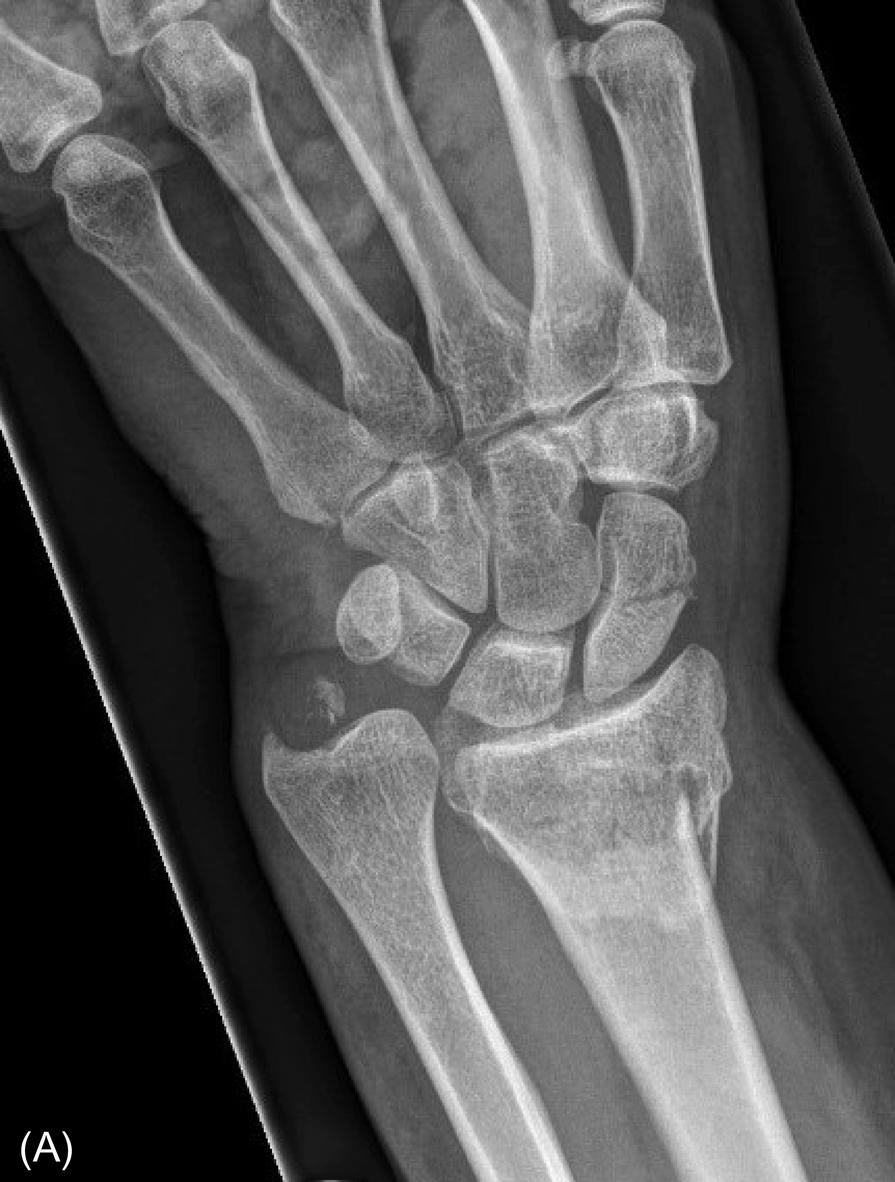Physical Address
304 North Cardinal St.
Dorchester Center, MA 02124
Simultaneous distal radius and scaphoid fractures are rare. If diagnosed, rule out or confirm if they are part of a trans-styloid, trans-scaphoid perilunate fracture dislocation (greater arc) with CT or MRI.
These injuries are most often caused by high-energy trauma, sometimes as part of polytrauma which will affect how to manage the fractures.
There is low-grade evidence that they should be treated, operatively.
A 36-year-old male sustains an isolated injury to his left dominant wrist after a motorcycle road traffic accident. There is an obvious deformity to the wrist. Radiographs reveal a comminuted volarly angulated distal radius fracture with a minimally displaced scaphoid waist fracture and an ulnar styloid fracture ( Fig. 1 ). What are your options for further diagnosis and treatment?

In contrast to isolated distal radius fractures, simultaneous fractures of the distal radius and scaphoid are rare with studies reporting prevalence of 0.5%–5%.
The second recognized pattern of injury is the fracture part (greater arc) of a perilunate (PL) dislocation with a distal radius fracture that most often is a radial styloid injury. These two patterns of injury will be addressed as separate questions in this chapter.
Most of these injuries are due to high-energy trauma mechanisms. That means that patients may have other fractures as part of polytrauma where lower limb or pelvis fractures may dictate how the upper limb injuries are managed.
Scaphoid fractures are less common than distal radius fractures, but account for 2%–7% of all fractures and are the most frequently injured carpal bone. They usually affect young males. Nonunion rates of up to 50% are reported for displaced scaphoid fractures. Untreated nonunion often leads to early development of arthritis. As the scaphoid fracture seen with a distal radius fracture is often undisplaced, it can commonly be missed. Therefore, a high index of suspicion is necessary and a CT or MRI may be required to prevent nonunion of missed injuries.
What is the most effective treatment of simultaneous fractures of the distal radius and scaphoid?
What is the most effective treatment of simultaneous fractures of the distal radius and scaphoid in patients with a trans-styloid, trans-scaphoid perilunate (greater arc) dislocation?
Simultaneous fractures of the scaphoid and distal radius are most often diagnosed and treated as bony injuries although some surgeons argue that they can only co-exist with a trauma mechanism of a greater arc injury, like in complete perilunate dislocations, with a variable extent of partial or complete intercarpal ligament tears. Most surgeons will opt for an open reduction and internal fixation of a simultaneous distal radius and scaphoid fracture to allow early mobilization, which in turn may improve functional outcome. Although this is a common opinion, it is not clear if there is any evidence to support it.
Become a Clinical Tree membership for Full access and enjoy Unlimited articles
If you are a member. Log in here